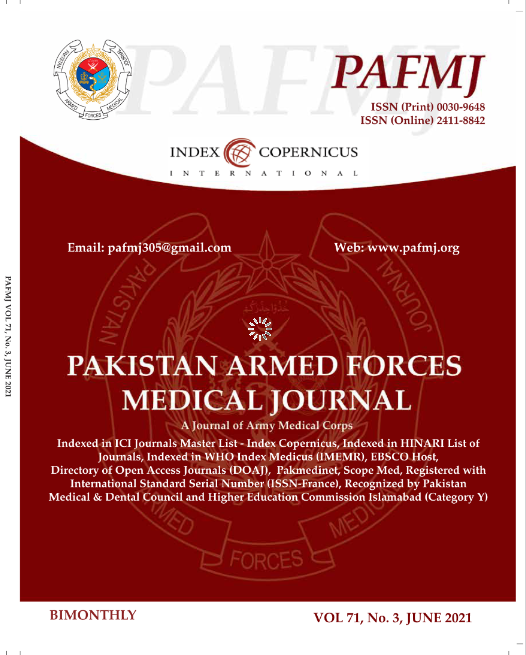FREQUENCY OF PEDIATRIC BRAIN TUMORS IN TERTIARY CARE INSTITUTE OF PAKISTAN AND COMPARISON WITH INTERNATIONAL DATA
DOI:
https://doi.org/10.51253/pafmj.v71i3.5479Keywords:
Brain tumor, Pilocytic Astrocytoma, Glioma, Ependymoma, PediatricAbstract
Objective: To analyze the histological spectrum of pediatric brain tumors (PBT) in Pakistani population and to compare the results with international data.
Study Design: Retrospective observational study.
Place and Duration of Study: Armed Forces Institute of Pathology, Rawalpindi, from Jan 2015 and Dec 2019.
Methodology: This data was analyzed using the latest World Health Organization (WHO) classification of Tumors of Central Nervous System 2016. The cases were divided in 5 categories according to age (0-2, 3-5, 6-8, 9-11 & 12-14 years).
Results: A total of 43 cases were included in the study. Of these cases, 26 (60.46%) were male and 17 (39.5%) were female. Male to female ratio was 1.5-1. The 6-8 year age group had the highest number of tumors while 0-2 year age group had the least. Mean age of diagnosis was 7.6 years. Ependymoma wasthe most common morphological type with 12 cases (28%) followed by pilocytic astrocytoma, diffuse glioma with 10 cases each (23%) and medulloblastoma with 9 cases (21%). Least common tumor subtype was Ewing sarcoma. Ependymoma were mostly of grade 3 (64%), pilocytic astrocytoma and medulloblastoma were of grade 1 and grade 4 respectively by definition, and diffuse gliomas were mainly of grade 2 (57%) type.
Conclusion: Ependymoma and pilocytic astrocytomaare the most frequent types of pediatric brain tumors in our region which follows the same trend as mentioned in western and regional literature.
Downloads
Downloads
Published
Issue
Section
License
Copyright (c) 2021 PAFMJ

This work is licensed under a Creative Commons Attribution-NonCommercial 4.0 International License.















